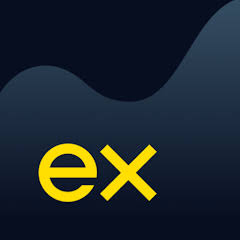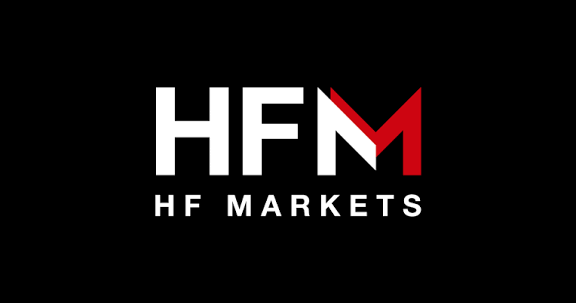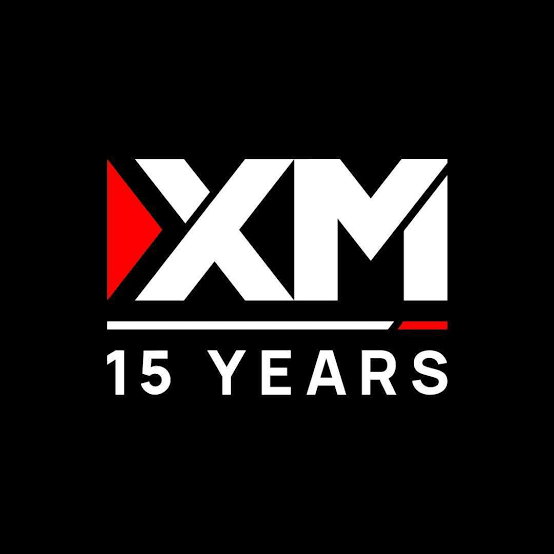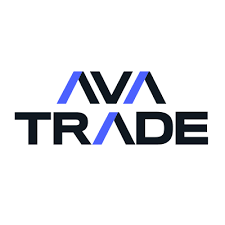Best Forex Brokers – An Evidence-Based Framework
This guide explains how to evaluate forex brokers using measurable criteria. We focus on all-in trading costs, execution quality, platform capabilities, and robust risk controls. Nothing here is investment advice; use demo accounts before going live.
Recommended Brokers 2025
Educational access and demo-first practice. No investment advice.
Table of Contents
- Recommended Brokers
- Introduction to Forex Trading
- Understanding Forex Broker Types
- Key Features of Quality Forex Brokers
- Regulation and Safety of Funds
- Understanding Forex Trading Costs
- Trading Platforms Comparison
- Forex Account Types Explained
- Independent Broker Rankings 2025
- Detailed Broker Reviews
- Due Diligence Checklist
- Risk Management in Forex Trading
- Educational Resources Section
- Broker Education Section
- Frequently Asked Questions
Introduction to Forex Trading
The foreign exchange (forex) market is the largest financial market in the world, with a daily trading volume exceeding $6 trillion. Unlike stock markets, forex operates 24 hours a day, five days a week, across major financial centers worldwide. This continuous operation allows traders to respond to global economic events as they happen.
How Forex Trading Works
Forex trading involves simultaneously buying one currency while selling another. These currencies are traded in pairs, such as EUR/USD (Euro vs. US Dollar) or GBP/JPY (British Pound vs. Japanese Yen). The first currency in the pair is the base currency, and the second is the quote currency. The exchange rate tells you how much of the quote currency you need to buy one unit of the base currency.
Major Forex Trading Sessions
| Session | Hours (GMT) | Major Financial Centers | Characteristics |
|---|---|---|---|
| Sydney | 22:00 - 07:00 | Sydney, Wellington | Lower volatility, Asian pairs active |
| Tokyo | 00:00 - 09:00 | Tokyo, Hong Kong, Singapore | Asian market focus, JPY pairs active |
| London | 08:00 - 17:00 | London, Frankfurt, Paris | Highest volatility, major pairs active |
| New York | 13:00 - 22:00 | New York, Chicago, Toronto | High volatility, USD pairs active |
Understanding Forex Broker Types
Forex brokers can be categorized based on their execution models and how they handle client orders. Understanding these differences is crucial for selecting a broker that matches your trading style and goals.
Market Maker vs. ECN/STP Brokers
| Feature | Market Maker (Dealing Desk) | ECN/STP (No Dealing Desk) |
|---|---|---|
| Execution Model | Takes opposite side of client trades | Routes orders to liquidity providers |
| Pricing | Fixed or variable spreads, no commissions | Raw spreads + commissions |
| Conflict of Interest | Potential conflict as broker profits from client losses | Broker earns commission regardless of trade outcome |
| Best For | Beginners, small accounts | Professional traders, large volumes |
| Examples | XM, AvaTrade | IC Markets, Pepperstone |
Hybrid Brokers
Many modern brokers use a hybrid model, offering both market maker and ECN/STP execution depending on the account type. This approach allows them to cater to different client segments with varying needs and experience levels.
Key Features of Quality Forex Brokers
When evaluating forex brokers, several critical factors determine whether they can meet your trading needs effectively and safely.
Essential Broker Features
Trading Conditions
- Competitive spreads and commissions
- Fast and reliable execution
- Minimal slippage and requotes
- Wide range of currency pairs
- Flexible leverage options
Platform & Tools
- Stable trading platform
- Advanced charting capabilities
- Multiple order types
- Mobile trading app
- Automated trading support
Safety & Support
- Strong regulatory oversight
- Segregated client funds
- Negative balance protection
- Responsive customer service
- Educational resources
Account Features
- Low minimum deposit
- Multiple account types
- Flexible funding options
- Quick withdrawal processing
- Islamic swap-free accounts
Regulation and Safety of Funds
Regulation is the most critical factor when choosing a forex broker. Regulated brokers must adhere to strict financial standards, provide transparency, and offer client protection mechanisms.
Major Regulatory Bodies
| Regulator | Region | Client Protection | Key Requirements |
|---|---|---|---|
| FCA (UK) | United Kingdom | £85,000 compensation | Segregated funds, negative balance protection |
| ASIC (Australia) | Australia | No statutory compensation | Segregated funds, strict capital requirements |
| CySEC (Cyprus) | European Union | €20,000 compensation | MiFID passporting, negative balance protection |
| CFTC/NFA (USA) | United States | No compensation scheme | Strict reporting, lower leverage limits |
| FSCA (South Africa) | South Africa | No compensation scheme | Segregated funds, capital requirements |
Safety Measures to Look For
- Segregated Client Funds: Broker keeps client money separate from company funds
- Negative Balance Protection: Prevents clients from losing more than their account balance
- Compensation Schemes: Government-backed protection if broker becomes insolvent
- Transparent Reporting: Regular financial audits and public reporting
- Secure Technology: Encryption, two-factor authentication for account security
Understanding Forex Trading Costs
Trading costs significantly impact profitability, especially for frequent traders. Understanding all potential costs helps you calculate your true break-even points and evaluate broker competitiveness.
Components of Trading Costs
| Cost Type | Description | Typical Range | Impact on Trading |
|---|---|---|---|
| Spreads | Difference between bid and ask prices | 0.1 - 3.0 pips | Immediate cost on entry and exit |
| Commissions | Fixed fee per trade or per lot | $0 - $10 per round lot | Additional cost on ECN accounts |
| Swap Rates | Overnight financing costs | Varies by pair and direction | Cost/benefit for positions held overnight |
| Slippage | Difference between expected and actual fill price | 0 - 5+ pips during volatility | Unpredictable cost, varies with market conditions |
| Inactivity Fees | Charges for dormant accounts | $5 - $50 per month | Avoidable cost with regular trading |
Cost Comparison: Major Forex Pairs
| Broker | EUR/USD Spread | Commission (per lot) | GBP/USD Spread | Total Cost per Round Turn* |
|---|---|---|---|---|
| Deriv | 0.6 pips | $0 | 0.9 pips | $6.00 |
| HFM | 0.5 pips | $0 | 0.8 pips | $5.00 |
| Exness | 0.3 pips | $0 | 0.6 pips | $3.00 |
| XM | 0.6 pips | $0 | 0.9 pips | $6.00 |
| AvaTrade | 0.9 pips | $0 | 1.2 pips | $9.00 |
| IC Markets | 0.1 pips | $7.00 | 0.2 pips | $8.00 |
*Based on EUR/USD, 1 standard lot (100,000 units), round turn = entry + exit
Trading Platforms Comparison
The trading platform is your primary interface with the markets. Choosing the right platform can significantly impact your trading experience and performance.
Popular Forex Trading Platforms
| Platform | User Level | Customization | Automation | Mobile Experience |
|---|---|---|---|---|
| MetaTrader 4 | Beginner to Advanced | High | Excellent (Expert Advisors) | Good |
| MetaTrader 5 | Intermediate to Advanced | Very High | Excellent | Good |
| cTrader | Intermediate to Advanced | High | Good (cBots) | Excellent |
| TradingView | All Levels | Very High | Limited | Excellent |
| Deriv Trader | Beginner to Intermediate | Medium | Limited | Good |
| AvaTradeGO | Beginner to Intermediate | Medium | Limited | Excellent |
Forex Account Types Explained
Most brokers offer multiple account types designed for different trading styles, experience levels, and capital sizes. Understanding these options helps you select the most suitable account.
Common Forex Account Types
| Account Type | Minimum Deposit | Spreads | Commission | Best For |
|---|---|---|---|---|
| Standard | $100 - $500 | Wider, no commission | None | Beginners, casual traders |
| ECN/Raw Spread | $500 - $2,000 | Tighter, raw spreads | $3 - $7 per lot | Active traders, scalpers |
| Professional | $10,000+ | Institutional pricing | Negotiable | High-volume traders |
| Islamic | Varies | Similar to standard | No swap fees | Muslim traders |
| Demo | $0 | Real market conditions | None | Practice, strategy testing |
Independent Rankings (Simple English)
We tested many forex platforms. The best ones are easy to use, have many currency pairs, fair pricing for short trades, strong regulation, and fast, reliable order execution. Here is a quick list for 2025.
Top 6 Brokers For Day Trading Forex (2025)
| Rank | Broker | Overall Score | Best For |
|---|---|---|---|
| 1 | Deriv | 9.4/10 | Innovative Products & Demo Practice |
| 2 | HFM | 9.2/10 | Multiple Account Types |
| 3 | Exness | 9.1/10 | Low Spreads & High Leverage |
| 4 | XM | 9.0/10 | Beginner-Friendly & Education |
| 5 | AvaTrade | 8.9/10 | Platform Variety |
| 6 | IC Markets | 8.8/10 | Raw Spreads & Fast Execution |
Why These Brokers Scored Well
Deriv – Innovative broker since 1999 with CFDs, multipliers, and accumulators, plus simple platforms (DTrader, Deriv MT5). Great for demo drills and short‑term trades. Learn product specs and volatility before going live.
HFM – Multiple account types and steady execution on MetaTrader. Tight spreads in liquid sessions. Match account type to your average trade size and journal slippage by session.
Exness – Deep liquidity, many base currencies, and competitive pricing. Practical tools like calculators help planning. Test spreads at your active hours and use a hard daily loss limit.
XM – Large choice of pairs, simple fees, and strong MetaTrader support. Spreads can be low in the right account type. Good choice if you want a small minimum deposit and quick onboarding.
AvaTrade – 50+ pairs, WebTrader + MetaTrader, and strong education. AvaProtect can help manage risk on specific trades for a fee.
IC Markets – Very sharp pricing with fast routing, plus MT4/MT5, cTrader and TradingView. Suits active traders who care about raw spreads and stable execution.
Detailed Broker Reviews
Here's an in-depth look at our top recommended forex brokers, examining their strengths, weaknesses, and ideal user profiles.
Deriv - Comprehensive Review
| Feature | Rating | Details |
|---|---|---|
| Regulation | 9/10 | MFSA, VFSC, LFSA, FSA, FSCA, FSC, FSA, CBCS |
| Trading Platforms | 8/10 | Deriv Trader, Deriv MT5, Deriv X, SmartTrader |
| Spreads & Costs | 8/10 | Competitive spreads, no commissions on most accounts |
| Account Types | 9/10 | Synthetic, Financial, Derived indices accounts |
| Education & Support | 9/10 | Extensive learning materials, 24/7 support |
Pros and Cons
Pros
- Innovative trading products
- User-friendly platforms
- Strong regulatory framework
- Excellent educational resources
- Flexible account options
Cons
- Limited traditional forex pairs
- Not available in some countries
- Some products may be complex for beginners
HFM - Comprehensive Review
| Feature | Rating | Details |
|---|---|---|
| Regulation | 9/10 | FCA, CySEC, DFSA, FSCA, FSA, CMA |
| Trading Platforms | 9/10 | MT4, MT5, HFM Platform |
| Spreads & Costs | 8/10 | Competitive spreads, no commissions on standard accounts |
| Account Types | 10/10 | Micro, Premium, Zero Spread, HFcopy, Auto |
| Education & Support | 8/10 | Good educational materials, multilingual support |
Due Diligence Checklist
Write down a simple process and apply it consistently. Verify regulation and any protections that apply in your region. Define your typical trade—instrument, average size, and holding time—so you can compare all‑in costs on relevant terms. Test execution on a demo during liquid overlaps and record intended versus filled prices to measure slippage. Read swap policies for overnight holds and understand corporate action handling on CFDs where applicable. Validate the platform features you actually use—multiple charts, hotkeys, alerts—and transition to live slowly with small risk per trade and a daily drawdown cap.
Due Diligence Checklist
| Category | Checkpoints | Notes |
|---|---|---|
| Regulation & Security |
|
Verify with official regulatory websites |
| Trading Costs |
|
Test during different market sessions |
| Platform & Tools |
|
Test during high volatility periods |
| Execution Quality |
|
Keep a detailed execution journal |
Risk Management in Forex Trading
Effective risk management is essential for long-term success in forex trading. Even the best trading strategy will fail without proper risk controls.
Essential Risk Management Principles
Position Sizing
- Risk only 1-2% of account per trade
- Use proper lot size calculations
- Adjust position size based on volatility
- Consider correlation between positions
Stop Loss Strategies
- Always use stop loss orders
- Place stops at logical technical levels
- Consider using guaranteed stops during high volatility
- Adjust stops to breakeven when appropriate
Leverage Management
- Use conservative leverage (10:1 to 30:1)
- Understand margin requirements
- Monitor margin levels regularly
- Reduce leverage during high volatility
Psychological Controls
- Set daily loss limits
- Take breaks after consecutive losses
- Avoid revenge trading
- Keep a trading journal
Risk Management Comparison by Broker
| Broker | Negative Balance Protection | Guaranteed Stops | Maximum Leverage | Margin Call Level |
|---|---|---|---|---|
| Deriv | Yes | No | 1:1000 | 100% |
| HFM | Yes | No | 1:2000 | 50% |
| Exness | Yes | No | Unlimited | 60% |
| XM | Yes | No | 1:1000 | 50% |
| AvaTrade | Yes | Yes | 1:400 | 100% |
Educational Resources Section
Quality educational resources can significantly accelerate your learning curve in forex trading. The best brokers offer comprehensive materials for traders at all experience levels.
Types of Educational Resources
Beginner Resources
- Forex basics tutorials
- Platform walkthroughs
- Risk management guides
- Demo account tutorials
- Glossary of terms
Intermediate Resources
- Technical analysis courses
- Strategy development guides
- Market analysis webinars
- Trading psychology materials
- Economic calendar guides
Advanced Resources
- Algorithmic trading guides
- Advanced risk management
- Portfolio management
- Market microstructure
- Professional trading strategies
Broker Education Section (Logos + Notes)
HFM
Match account type to your trade size; journal slippage and manage risk.
XM
Compare accounts and test order handling; keep risk small in live transition.
AvaTrade
Evaluate platform stability during volatile windows; start on demo to learn flows.
IC Markets
Compare raw vs standard pricing accounting for commissions and typical slippage.
Learn morePepperstone
Execution and spreads are central for day trading. Journal slippage by session.
Learn moreFAQs
What matters more: spreads or commissions?
Both matter. Calculate total cost per trade including expected slippage and swaps. For high-volume traders, ECN accounts with commissions and tight spreads often work out cheaper. For casual traders, standard accounts with no commissions but wider spreads may be simpler.
How to compare platforms?
Create a checklist (stability, order types, hotkeys, alerts) and practice on demo. Consider your trading style: scalpers need fast execution and one-click trading, while swing traders prioritize charting tools and analysis features.
What is the minimum amount needed to start forex trading?
While some brokers allow accounts with as little as $10, a more realistic starting point is $500-$1,000 to properly implement risk management strategies. Remember that trading with insufficient capital increases the risk of margin calls.
How important is regulation when choosing a broker?
Extremely important. Regulated brokers must adhere to strict financial standards, provide segregation of client funds, and often offer compensation schemes. Always verify a broker's regulatory status with the official regulatory body.
What is the best trading platform for beginners?
MetaTrader 4 is widely considered the best for beginners due to its simplicity, extensive documentation, and large user community. Many brokers also offer proprietary platforms with simplified interfaces specifically designed for newcomers.
How much leverage should I use?
Conservative leverage (10:1 to 30:1) is recommended for most retail traders. High leverage can amplify profits but also significantly increases risk. Many professional traders use even lower leverage ratios to manage risk effectively.
What is slippage and how can I minimize it?
Slippage is the difference between your requested price and the actual execution price. To minimize slippage, trade during high-liquidity sessions, use limit orders instead of market orders, and avoid trading during major news events.




